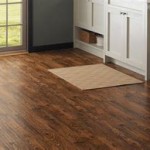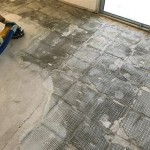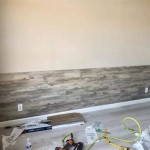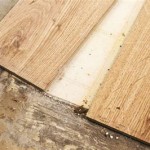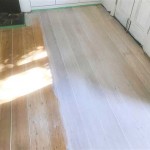Can You Sand and Paint Engineered Wood Floors Before Painting?
Engineered wood floors offer a durable and attractive alternative to solid hardwood floors. While they are typically finished with a stain and polyurethane coating, some homeowners may wish to paint their engineered wood floors for a more modern or personalized look. A question that often arises is whether sanding the floors prior to painting is necessary. The answer depends on several factors, including the existing finish, the desired paint color, and the desired level of durability.
Understanding Engineered Wood Construction
Engineered wood flooring is constructed with a wear layer, which is a thin layer of real hardwood veneer, attached to a core made of plywood or other engineered wood products. The wear layer is typically between 1/16th and 1/8th of an inch thick, making it thinner than a typical hardwood floor. The thickness of the wear layer plays a crucial role in determining whether sanding is necessary before painting.
Benefits of Sanding Engineered Wood Floors
Sanding engineered wood floors before painting offers several benefits, including:
- Smoother Surface: Sanding removes any existing finish, imperfections, and unevenness, creating a smoother surface for the paint to adhere to. This results in a more even and professional-looking finish.
- Better Paint Adhesion: Sanding provides a rougher surface for the paint to grip onto, improving adhesion and preventing the paint from peeling or chipping over time.
- Enhanced Durability: Sanding removes the existing finish, which can be a barrier to the paint's adhesion. This allows the paint to penetrate the wood surface, creating a more durable and long-lasting finish.
When Sanding is Necessary
Sanding is typically recommended when:
- The Existing Finish is Damaged: If the existing finish is scratched, chipped, or worn, sanding is necessary to create a smooth and even surface for painting.
- You Want to Change the Color Significantly: Painting over a dark finish with a light color may require sanding to ensure the new paint color is fully visible.
- You Want a High-Quality Finish: For a professional-looking and durable painted finish, sanding is generally recommended to improve paint adhesion and enhance longevity.
When Sanding May Not Be Necessary
In some cases, sanding engineered wood floors before painting may not be necessary. This is especially true when:
- The Existing Finish is in Good Condition: If the existing finish is smooth, free of imperfections, and the desired paint color is similar to the existing color, sanding may not be necessary.
- The Wear Layer is Thin: If the wear layer is extremely thin, sanding could potentially damage the floor by exposing the core material.
- You Are Using a Bonding Primer: A bonding primer can create a strong bond between the paint and the existing finish, eliminating the need for sanding in some cases.
Considerations When Sanding Engineered Wood Floors
When sanding existing engineered wood floors, several considerations are important:
- Choose the Right Sandpaper Grit: Start with a coarse grit sandpaper to remove the existing finish and gradually work your way to a finer grit for a smooth finish. It's essential to use a sander designed specifically for wood floors to avoid damaging the surface.
- Sanding Depth: Be careful not to sand too deeply and expose the core material. The wear layer is relatively thin, and excessive sanding can damage the floor.
- Dust Control: Sanding wood floors generates a significant amount of dust. Use a dust collection system and wear a mask to protect yourself from inhaling harmful particles.
Alternatives to Sanding
If sanding is not feasible, there are alternative methods to prepare engineered wood floors for painting:
- Light Scuffing: Scuffing the surface with sandpaper or a sanding sponge can roughen the surface slightly, improving paint adhesion without sanding the entire floor.
- Using a Bonding Primer: A bonding primer is designed to adhere to existing finishes, creating a strong bond for the paint to adhere to.
- Applying a Paint and Primer in One: Some paint manufacturers offer paint and primer in one, which combines the benefits of both products in a single application.
Ultimately, the decision to sand or not sand engineered wood floors before painting depends on the specific circumstances. Carefully assessing the existing finish, the desired paint color, and the desired level of durability will help determine the best course of action for achieving the desired results.

How To Paint Your Wood Floors No Sanding Trust Me My Priming Durable Inexpensive Method

How To Paint Wood Floors Without Sanding The Heathered Nest

Can You Paint Engineered Wood Harbor Exports

Diy Project Trip To Home Chalk Painting Floors

How To Paint Wood Floors Without Sanding The Heathered Nest

Painting Engineered Hardwood Floors Tips For Success From The Forest Llc

Should I Paint Before Sand The Floors 5 Brilliant Reasons To Do It Now

Diy How To Paint Wood Floors Like A Pro Shabbyfufu Com

Can You Change The Color Of Engineered Wood Floors

Can You Paint Laminate Flooring How To Guide Leader Floors Blog
See Also
